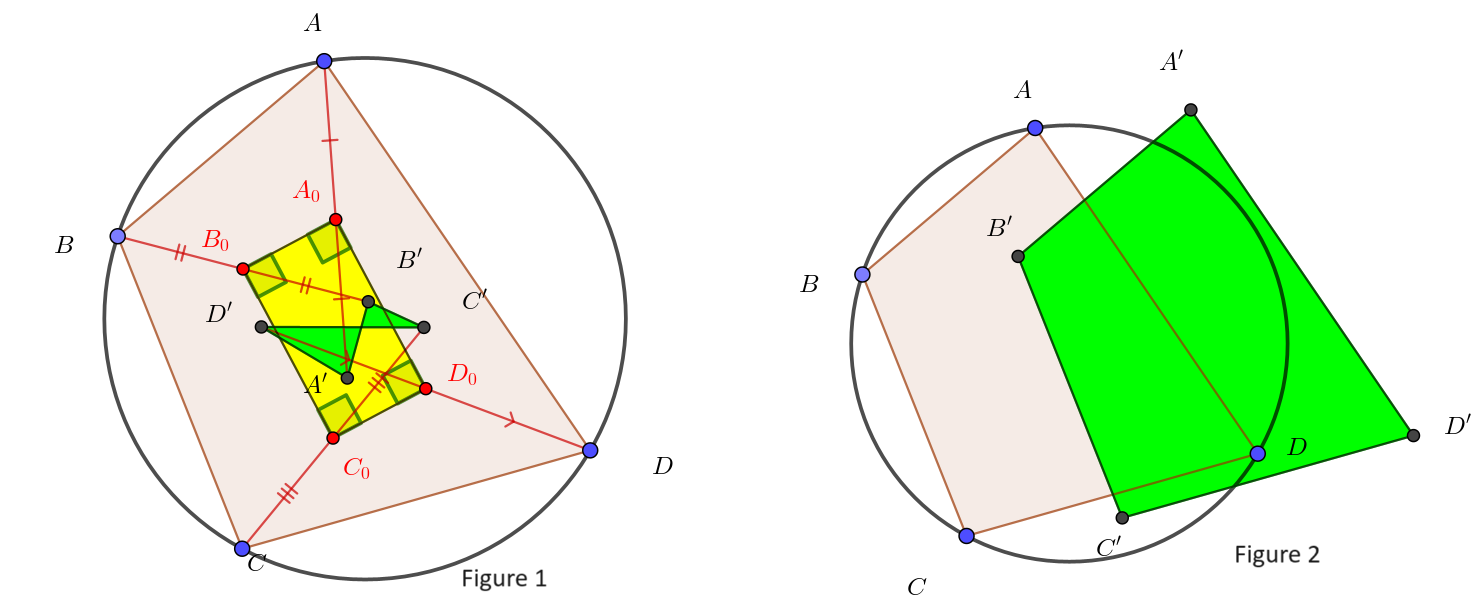I have verified these results in a rather uninspiring manner, by denoting the vertices by $A_1,A_2,A_3,A_4$ and supposing that $A_1=(\cos(\theta_1),\sin(\theta_1))$, $A_2=(\cos(\theta_2),\sin(\theta_2))$, etc., then simply computing the new points, using Mathematica. The formulae are, not surprisingly, rather messy but they do display the precise role of the convexity condition in this problem (often demanded when not necessary and omitted when necessary in quadrilateral geometry).
While answering this question, it became clear that the following configuration—a quadrilateral as above and, given a triangle centre with triangle function $f$, a new quadrilateral $B_1B_2B_3B_4$, where $B_1$ is the corresponding centre of $A_2A_3A_4$, etc.— provides a rich field for conjectures and theorems on relationships of the above type between the two quadrilaterals. Since there are thousands of such centres, a systematic approach seems called for. This is provided by the so-called shapes of triangles and quadrilaterals. The shape of a triangle is the unique point $(p,q)$ which is such that $A_1A_2A_3$ is directly similar to $(0,0)$, $(1,0)$ and $(p,q)$. Similarly, the shape of $A_1A_2A_3A_4$ is $(p_1,q_1,p_2,q_2)$, obtained from the shapes of $A_1A_2A_3$ and $A_1A_2A_4$ in the natural way.
The importance of the quantities is that they can be used to determine when two quadrilaterals are similar (when their shapes agree) or when a given quad belongs to a given class (squares, rectangles, parallelograms, cyclic, $\dots$) in terms of polynomial identities.
Returning to the basic problem, we can assume that the original quadrilateral has vertices $(0,0),(1,0),(p_1,q_1),(p_2,q_2)$ and compute the vertices of the derived one, and hence its shape, in terms of the $p$‘s and $q$‘s. This provides the required general approach.
The method is simple and natural: one computes explicitly three functions $f,g,h$ of three (resp. four, three) planar variables—the first assigns to $A_1,A_2,A_3$ the shape of the corresponding triangle, the second is analogous for a quadrilateral, the third assigns to the triple the centre of the triangle $A_1A_2A_3$ determined by a given fixed triangle centre function. These can be computed by hand and, as a point of honour, I carried out this task. However, to check the result I codified them with the aid of Mathematica. This gives a machine to run through the basic triangle centres to explore any new results by explicitly computing the shape of $B_1B_2B_3B_4$ for a given centre function.

